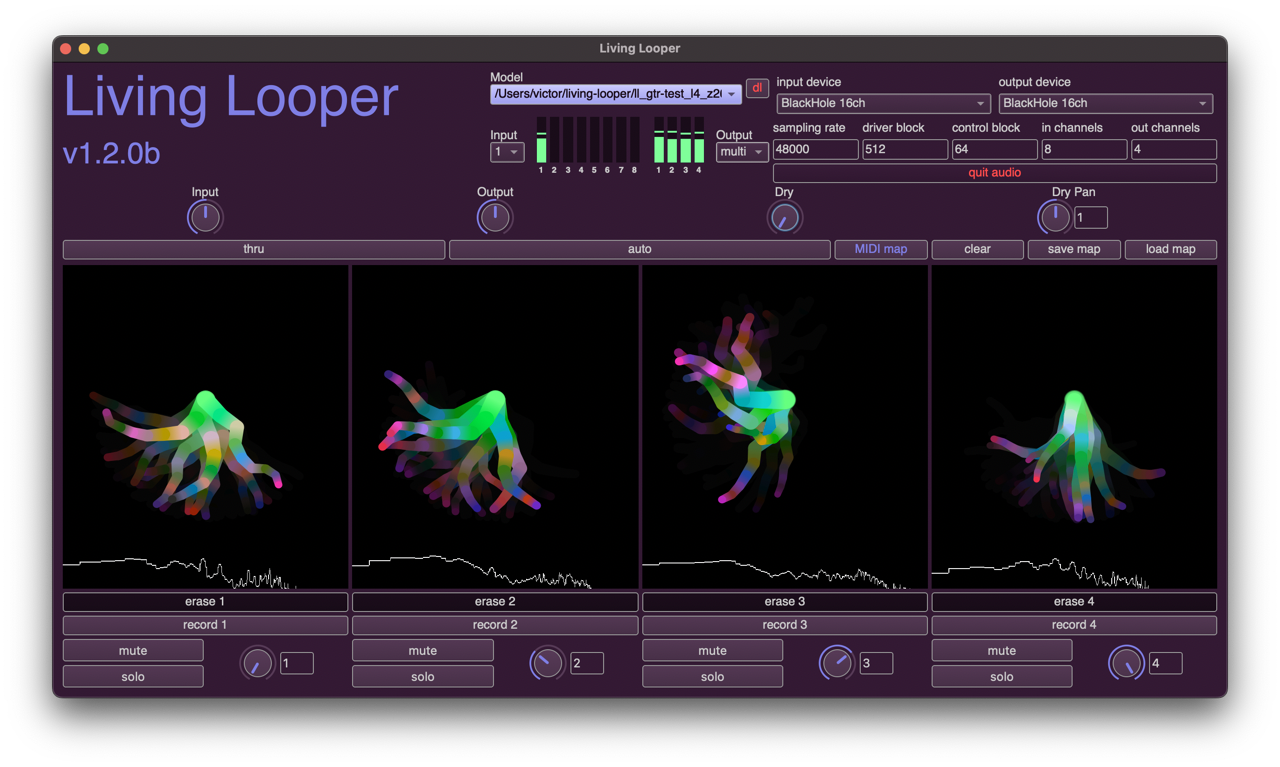The Living Looper

Living Looper by Victor Shepardson.
A looper records a short segment of audio and plays it back in a loop. This can be used to set up a background drone or texture, or allow one musician to perform multiple parts. A multi-channel looper can hold the layers of a rich texture or a complex composition.
An intelligent looper might do more than repeat verbatim. It might loop without disruption at the loop boundary, or continue as a never-precisely-repeating texture, or as what might have sounded next. It might control itself, unburdening but surprising the musician. Multiple loops might become sensitive to one another, entraining rhythmically or modulating timbres. One loop might reference to the events of an another loop as well as its own memory when it decides how to continue. The looper would be elevated from an effect or tool to an intelligent instrument in itself. The musician would not direct the looper to achieve a particular effect, but listen to it, garden it, negotiate with it.
My project, the “Living Looper”, explores these ideas. Performing with a looper involves carefully choosing the sounds in a loop and aligning loops precisely. With the living looper, instead the processes and interconnections between loops are carefully assembled into a performance.
NIME 2023 Paper
preprint: http://iil.is/pdf/2023_nime_shepardson_magnusson_living_looper.pdf
Abstract
We describe the Living Looper, a real-time software system for prediction and continuation of audio signals in the format of a looping pedal. Each of several channels is activated by a footswitch and repeats or continues incoming audio using neural synthesis. The live looping pedal format is familiar to electric guitarists and electronic musicians, which helps the instrument to serve as a boundary object for musicians and technologists of different backgrounds to study the impact of machine learning on musical performance. Each Living Loop channel learns in the context of what the other channels are doing, including those which are momentarily controlled by human players. This leads to shifting networks of agency and control between players and Living Loops. In this paper we present the ongoing design of the Living Looper as well as preliminary encounters with musicians in a workshop and concert setting.
Software
https://github.com/victor-shepardson/living-looper